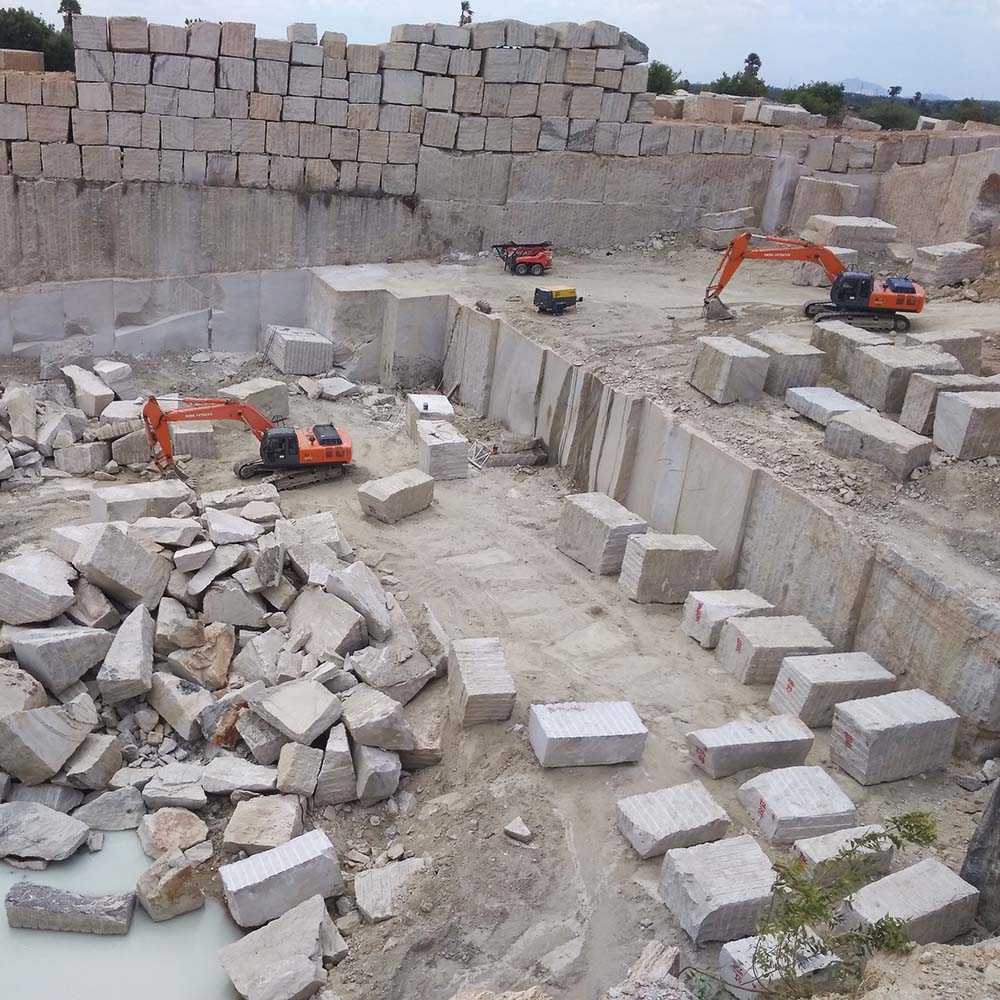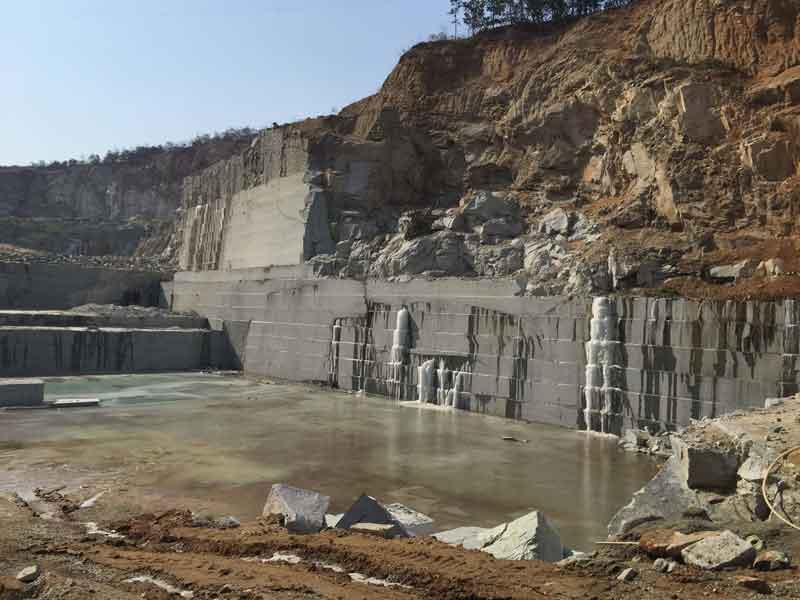Letting Loose the Beauty and Durability of Granite Quarry: A Trip Via Time
Granite quarries stand as testimonies to both the geological wonders of our earth and the enduring craftsmanship of mankind. The trip via time that granite quarrying stands for is an engaging story of development, determination, and the complex dance between nature and industry. Comprehending the origins of this age-old practice, the development of methods and tools utilized, and the contemporary importance of granite quarrying reveals a tapestry rich in history and significance. As we peel off back the layers of time and dive right into the intricate world of granite quarrying, we reveal a tale that not just showcases the elegance and resilience of this stunning rock but also sheds light on the profound effect it has carried people past and present.

The Beginnings of Granite Quarrying
In the record of history, the beginnings of granite quarrying can be mapped back to old worlds where the mission for sturdy structure materials fueled the development of this ageless craft. From the impressive frameworks of old Egypt to the magnificent temples of Greece, granite has actually been revered for its toughness, elegance, and longevity. The Egyptians, with their sophisticated quarrying techniques, were amongst the initial to draw out granite on a huge range, using it to build huge pyramids and detailed statuaries that have actually endured the examination of time.
As worlds advanced, so did the approaches of quarrying granite. The Romans better fine-tuned the techniques, establishing devices and equipment to essence and transportation granite over vast distances for their architectural jobs. The durability and aesthetic appeal of granite made it a valued material for sanctuaries, monuments, and sculptures throughout the ages.
Today, the tradition of old quarrying methods lives on, with contemporary innovation improving effectiveness while still paying homage to the workmanship of our forefathers. The origins of granite quarrying function as a testament to human resourcefulness and the long-lasting allure of this noble stone.
Devices and Strategies of Quarrying
Checking out the careful workmanship of granite quarrying unveils an advanced array of devices and techniques thoroughly developed over centuries. Quarrying granite needs customized equipment to draw out the rock from the earth effectively and with precision. Modern quarries make use of diamond-wire saws, high-powered drills, and dynamites to disintegrate the granite in a regulated manner. These devices enable the removal of huge blocks of granite while minimizing waste and ecological impact.
In enhancement to advanced equipment, traditional hand tools are still made use of in certain quarrying procedures to ensure delicate accuracy in removing the stone. Chisels, hammers, and wedges are utilized by knowledgeable quarry workers to different granite obstructs along all-natural fractures, a technique that has actually been given via generations.
Furthermore, methods such as drilling vertical and straight openings for putting feathers and wedges, as well as the controlled usage of nitroglycerins in strategic places, allow quarry employees to remove granite efficiently while preserving the stability of the rock. The consistency in between contemporary technology and conventional workmanship is crucial to the lasting quarrying of granite for generations ahead.
Evolution of Granite Quarries
The change of granite quarries gradually exposes a remarkable story of technical advancement and industry evolution. From ancient times where manual tools like knives and hammers were made use of to remove granite blocks, to the commercial revolution presenting steam-powered equipment for faster quarrying, the advancement of granite quarries has actually been noted by considerable advancements. In recent decades, the advent of ruby cord saws and progressed exploration innovations has actually revolutionized the extraction procedure, allowing for more accurate cuts and minimized wastefulness of raw material.

Granite Quarrying in Modern Times
The progression of granite quarrying methods from historic dependence on guidebook devices to the cutting-edge approaches of modern-day times emphasizes an amazing journey of technological development and sustainability practices within the industry. In contemporary granite quarrying, progressed equipment such as ruby wire saws, high-capacity excavators, and electronic drilling devices have actually transformed the removal procedure. These devices enhance efficiency, accuracy, and safety, enabling larger quantities of granite to be extracted in a click for more info much shorter duration compared to traditional approaches.
In addition, modern-day quarrying methods focus on sustainability and ecological stewardship - granite quarries in south africa. Business are increasingly adopting eco-friendly approaches like water reusing systems, dust reductions innovations, and rehab plans for worn down quarries. These efforts aim to decrease the ecological impact of granite removal, save natural deposits, and bring back quarried landscapes to their original state
In addition, the assimilation of digital modern technologies like drones, GPS monitoring, and 3D modeling has actually enabled quarry drivers to optimize procedures, improve decision-making, and make certain the sustainable monitoring of resources. By welcoming development and sustainability, the granite quarrying sector in modern times remains to flourish while promoting environmental duty.

Maintaining and Protecting Granite Quarries
Amidst the developing landscape of granite quarrying methods, preservation and security of these important natural sites have actually come to be extremely important problems for sector stakeholders and ecological supporters alike. As granite quarries proceed to be a crucial source of this desired stone, it is necessary to take on sustainable strategies that guarantee their long life and secure surrounding environments.
Protecting granite quarries involves implementing reliable recovery strategies to restore the land post-extraction. granite quarries in south web africa. This procedure consists of reshaping the terrain, replanting indigenous plant life, and developing environments for wildlife to thrive. By recovering quarries to their all-natural state, the environmental impact can be minimized, and the elegance of these landscapes can withstand for future generations to appreciate
Furthermore, securing granite quarries requires enforcing regulations that control accountable quarrying practices. This includes surveillance water top quality, Full Article managing dust exhausts, and taking care of noise degrees to alleviate disturbances to the setting and close-by areas. Collective efforts in between market gamers, governmental bodies, and conservation teams are vital in supporting these standards and making certain the sustainable usage of granite quarries.
Final Thought
To conclude, the journey through time in granite quarrying discloses the origins, devices, techniques, and development of this practice. The contemporary era has actually brought advancements in quarrying strategies, allowing the preservation and security of these important natural deposits. It is very important to remain to maintain lasting methods to make certain the beauty and longevity of granite quarries for future generations to appreciate.